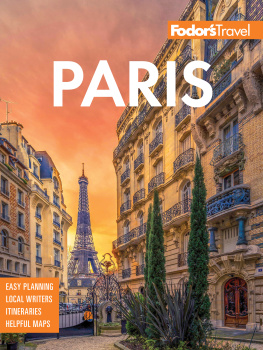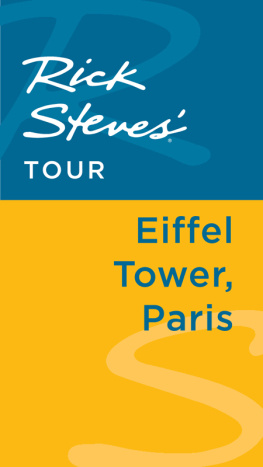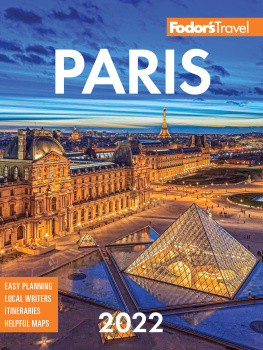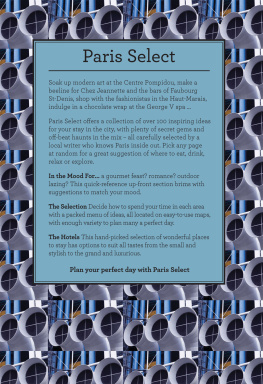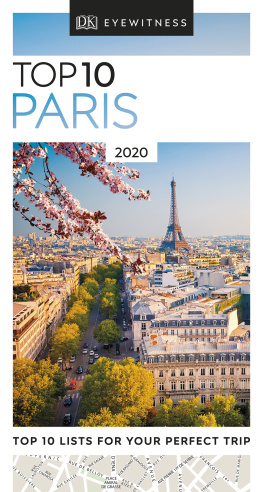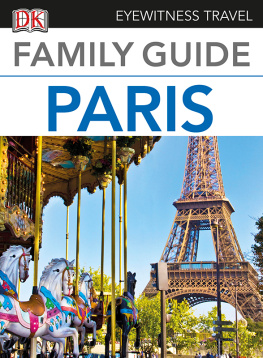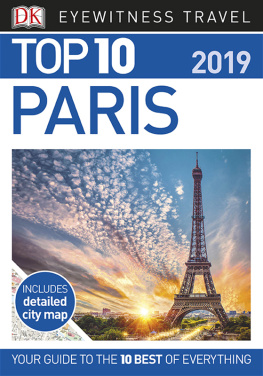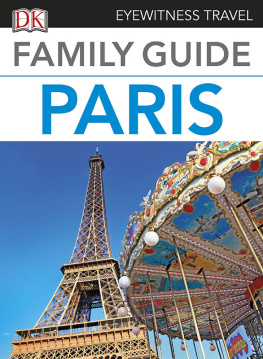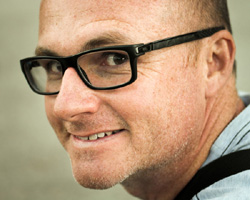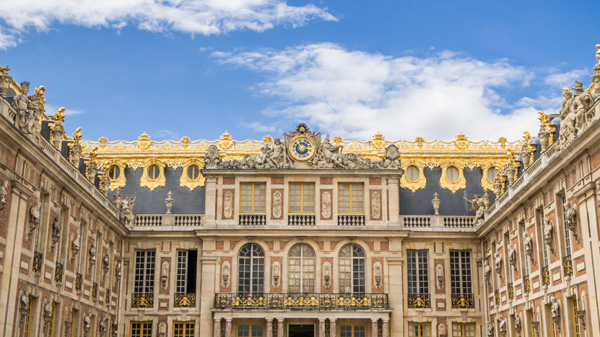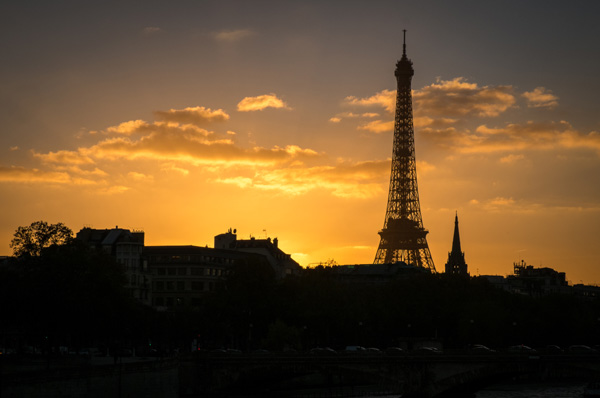Alastair Arthur grew up in a small seaside town on the south coast of England, a few minutes walk from the beach, fish markets, and amusement arcades. He bought his first digital camera in 2002, a 2-megapixel Nikon, and immediately took it to photograph in Tunisia. He moved to Paris in 2012.
He specializes in portrait photography, but he also loves travel and street photography. You can find his work and more information at www.alastairarthur.com.
About This Guide
Whether youre visiting Paris for the first time, or youve already seen some of the sights but want to get to know the city better, my aim is to point you and your camera in the right direction. This guide provides details on the most spectacular sights, from the most famous to the less well known, and suggests how to make the most of your time as a photographer.
Fujifilm X-E1, 31.5mm, ISO 200, 1/210s, f/13
Getting Started
Keep in mind that this book is not a tourism guide. If you want to know where to stay, this is not the book for you. (Plus, why are you sleeping?! Paris is great to photograph at night. Grab your camera and get out there!)
So, what is in the book? This guide offers tips on locations, timing, viewpoints, and local information. In addition, the images here include the EXIF data to show you the settings I used. These images are all my own and are intended to spark your creativity to find a new angle or perspective.
I assume you already enjoy photography and know your way around a camera. Thats not to say that a beginner photographer wont benefit from this guide, but Im not going to walk you through the camera settings for each shot.
Where to Photograph
Im not going to tell you exactly what photos to takewheres the fun in that? Rather, Im going to suggest some viewpoints, and you are welcome to re-create those sample shots. While I can point you in the right direction, photography is about vision. The creative elementthe key elementneeds to come from the photographer. Your photos will be better for it. What I aim to do is save you time in getting to the places where your creativity can thrive.
Tip
This book includes links to Google Maps, so you can click through to see the location online. This is especially handy if youre reading on a smartphone or tablet while traveling.
I try to avoid the term tourist. Most of us dont like to think of ourselves as tourists, yet we visit so many places where we will always be, to some extent, outsiders. So, lets call ourselves visitors. As a visitor, Ill direct you to places that are full of people and places where you might be the only person with a camera. You wont find a lot of solitude in Paris, but you will find wonderful images. Your challenge will be how best to capture them. So, dear visitor and photographer, welcome to Paris!
The City of Paris
If photography is drawing with light, then what better place in which to practice the art than in the City of Light. Its not a big city if you consider the main area to be within the Boulevard Priphrique (ring road), although the total metropolitan area is one of the largest in Europe. And, of course, Paris is full of stunning architecture, art, and people.
Fujifilm X-E1, 55mm, ISO 400, 1/680s, f/14
Visitor Information
Paris is a beautiful city, and its not just the monuments and museums. Its the iron railings. The ornate doors. Its the parks and the shops and the lights. The bridges and the buildings. Its also, very often, the people. Beauty and elegance are respected, upheld, sought after, and cherished. Its one of the global centersif not the global centerfor fashion and art.
Paris is also rich in tradition. Its an old city, dating back more than 2000 years. Notre Dame, for example, celebrated its 850th anniversary in 2013. Youll find an abundance of patisseries, cafes and markets, featuring fresh fruits and vegetables, fish, cheeses, and wines. Its not cheap, and its not the cleanest city on the planet, but it is rich and vibrant and beautiful. And Paris has so many stories to tell. Thats where you and your camera come in.
Weather
Typically, Paris has mild winters and warm summers like most of Western Europe. Summer temperatures usually vary between 1525C (5977F). They can reach 30C (86F) but rarely go much higher.
Rain is common throughout the year, but snow is rare. If youre fortunate and it does snow while youre here, make the most of it quickly because it will tend to be light and melt within a few days.
Getting Around
The Metro and RER networks are a quick and easy solution. A pack of ten tickets, available from the machines and ticket counters at all stations, should last for a few days. I recommend walking as much a possible, though. The main sights are not that far apart, and youre always likely to stumble across more images that youll want to capture on the way.
If you have a smartphone or tablet, its worth downloading a map of central Paris from Google Maps. Storing the map offline means you dont have to rely on mobile reception or resort to data roaming. To download, first search for Paris and zoom so that the area you want to download is displayed onscreen. Then type OK maps into the search bar to start the download. If you get stuck, you can also find maps at the entrance to most Metro stations.
Local Inspiration
As a photographer in Paris, you are following in many great and accomplished footsteps. To name a few:
Eugne Atget (18571927). Atget pioneered documentary photography. His aim was to capture scenes of Paris before they changed under modernization, whether as commissioned works or as his own projects. His work was largely unrecognized during his lifetime.
Man Ray (18901976). Born in America, Ray spent most of his career in Paris. He considered himself primarily a painter, but he was best known for his avant-garde fashion and portrait photography.
Brassa (18991984). Hungarian by birth, Brassas fame came through his photography of Paris, including the upper classes and his artist friends such as Dal and Picasso.
Henri Cartier-Bresson (19082004). Generally considered to be the pioneer of photojournalism, his Decisive Moment photography and its implications have inspired generations of photographers.
Robert Doisneau (19121994). Another pioneer of photojournalism, Doisneau is famous for his 1950 photograph Le baiser de lhtel de ville (The Kiss by the Town Hall).
Willy Ronis (19102009).


